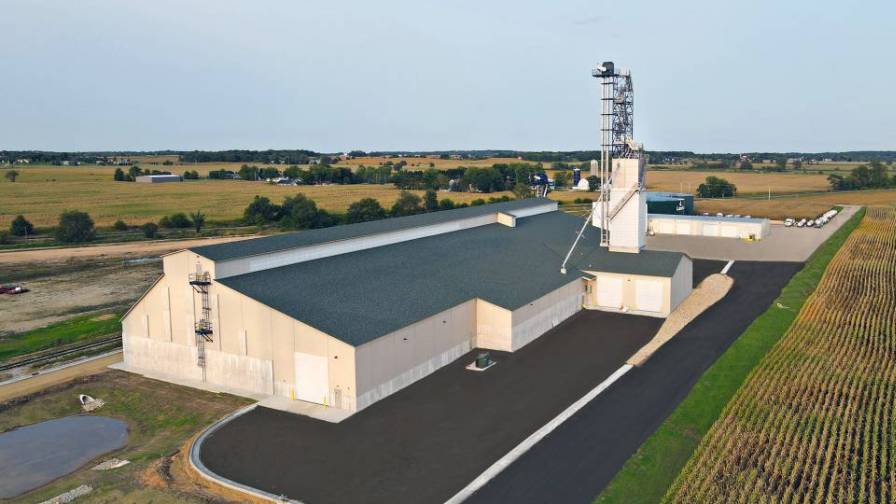Ag Technology: A Glimpse At Tomorrow
The year is 2063, and we’re following young John Lightbar, who’s fresh out of graduate school with a degree in “Precision Agriculture.” John recently accepted a job with a family-run, full-service retailer.
John landed at the Des Moines, IA, airport, and while taxiing he alerted the vehicle dispatch system of his arrival by providing membership verification information into his headset. One of the nice perks of joining the retailer was access to a network of autonomous vehicles across the country. John simply provides his location and time of arrival and a driverless vehicle is waiting for him. Following the instructions given through his headset, John finds his vehicle just outside the airport departure doors.
Settling into what used to be called the “driver’s seat,” John turns on the voice-actuated, onboard computer, which uses the front windshield as a screen. After verbally giving his username and password, John immediately sees messages, which are separated between those generated by machines and those composed by people. John is given the choice to view or listen to messages, and he decides to view messages since he is expecting some attachments.
For as long as he’s been studying and participating in the ongoing technology revolution, John has observed that fewer and fewer messages are coming from people. His world is becoming one of communication with machines.
In the car alone, travel time provides John the opportunity to quickly view his messages as they are all prioritized according to a pre-established criterion of geography and importance. After viewing messages and feeling tired from the travel, John asks the vehicle to switch to sleep mode, as the vehicle must cover a distance of about 150 miles to a remote farming area in northwestern Iowa. John dozes off for the remainder of the trip, and is awakened by a music alarm when arriving at his destination.
First Day At Work
Following a good night’s sleep in one of the company’s temporary residences, it’s time for the first day of work. John quickly gets ready, which includes putting on his company-issued headset. Placing a paper-thin, roll-out screen on a wall, John reviews the agenda sent by his new employer. It includes introductions to management and fellow employees, but there are several hours dedicated to “technical orientation.” With a combination of excitement and apprehension, John jumps into his waiting vehicle and heads off to work.
As John turns into the driveway of the company, his headset alerts him that he has entered the proprietary shield. This forms a data and information “shell” around the company and blocks out all unwanted communication and unauthorized attempts at accessing electronic transactions occurring on the grounds.
After being dropped off by the autonomous vehicle, John is greeted by a company representative. Following formal introductions, he is led to a room for his technical orientation. John quickly recognizes that the layout of the room is a “command” center. The console design appears to be a slightly newer version than the one he was trained on at the university.
As is the case with most centers, there are two individuals on active duty at all times. The requirement of two individuals, or “sentries” as they are called, began with the origination of the centers. No matter how sophisticated programs had become in precision agriculture, there was always unforeseen problems. And these problems almost always required a sentry to leave his or her post as part of the investigation.
Serving As Co-Pilot
Per instructions, John takes the right “co-pilot” seat at the console. The console consists of two identical screens, one for the “pilot” seat and one for the co-pilot. Sitting in the co-pilot seat, John puts on a headset as nearly all interactions with the screen are through verbal commands.
The screen is divided into five sections: Left, right, top, bottom and center. On the left section is the list of active producers arranged by priority. When John speaks the name of the first producer on the list into his headset, his fields are displayed on a map in the center section. The field or fields requiring immediate attention are displayed in red along with their names.
When he says the field name, a matrix appears listing row-by-row the activities that have already been undertaken on the field, along with future plans. John understands the importance of having good records on production activities, as traceability is demanded by the food supply chain.
An economic calculator in the right section gives a running tally of costs versus revenues that have occurred and are planned during the growing season for the selected field. The top section consists of a row of icons representing IT tools that can be activated while viewing a field or perusing the activity matrix. By calling out each icon, information is displayed in various forms on the screen. For example, by calling out the “pest” icon, distributions of relevant pests are displayed on the field-centered map. The bottom section consists of a row of icons identifying the different forms of communications which can be done with individuals or machines in the field.
The pilot next to John watches as he slowly works his way down the names of the high-priority producers, farms and fields. He occasionally brings to John’s attention important data that should be displayed on a regular basis and where to look for alerts, such as threatening weather or an impaired machine. John marvels at the fact that more than 1 million acres are being automatically tracked through the console.
As John is gradually being tutored by the pilot on the workings of the console, the systems administrator for the company joins the discussion. She points out that more than one terabyte of data are retrieved daily from sensors and equipment in the field. She notes that these data are automatically combined with remotely-sensed data from satellite and model data from third-party providers and fed into the company’s decision support system.
The decision support system provides a recommended set of activities for the upcoming production season and makes tactical adjustments during a season based on field data and the economic outlook of the planted crop. She emphasizes that each of the recommended activities comes with a measure of risk based on its past impact on yield and how closely a new season’s environmental conditions match those of previous years.
During a break in his training on the command console, the “pilot” reaches in front of John and manually activates one of the communication icons on his screen. Immediately, John sees three flashing requests from customers to have an online conversation. John verbally activates the first request through its identification number. An image of the producer in his field appears on the screen. He begins asking John about the presence of a particular pest just south of his location. John activates the appropriate icon for the pest’s distribution and shares the displayed map with him. The map includes text provided by the state Extension specialist on the future movement of the pest. John also displays a series of maps containing model output on the forecasted movement of the pest in the next few days. After passing along his insights on what to look for in the different maps, the producer thanks John and signs off.
The pilot notices that John is beginning to get tired from the information overload on his first day at work. He recommends ending the technical orientation for the day and hands John over to the company manager. The company manager takes John outside the main office where John can survey the various operations occurring in neighboring fields and between buildings.
Everywhere there are machines moving in an orchestrated pattern. They are lifting and loading containers of seed, fertilizer, chemicals and other materials from storage facilities to autonomous trucks. They are also removing empty containers from returning trucks. Tractors with their various implements can be seen leaving the grounds of the company. All these vehicles and machines in their various configurations can be tracked through the console. As long as John remains inside the security shield, he can remotely access the command center and interact with his screen. However, when he leaves the company grounds, his access privileges are similar to a customer.
End Of Day Thoughts
Returning to the main office, John thanks the manager, pilot and the other employees for their help, and heads back to his residence. Feeling satisfied with his first-day progress, John begins to think back on composition of the company staff and the work environment. The first thought that strikes him is the high level of technical know-how demonstrated by all members. Also, how few of the personnel came from farming backgrounds.
The second thought is how close the working environment was to his academic training. Ever since AgGateway began a program in 2015 to use students to evaluate new technologies, graduates with precision agriculture degrees were able to enter the workforce running.
The third thought was how machines had taken over nearly all the physical tasks associated with agricultural production. As in the rest of society, the ubiquitous presence of machines in everyday life had become a topic of much debate. The last thought, which was a bit surprising to him, was how every decision was tied to economics and sustainable practices. While John was taught of the relation between production decisions and the economy, it never quite hit home until he was in a company setting.
Sitting outside his residence in the light of a setting sun, John tries to imagine what it must been like to participate in precision agriculture programs back in the early 21st century. How companies struggled to develop standards in precision agriculture. How the international agricultural community worked so hard to realize a common set of concepts and definitions for precision agriculture. How universities worked to take the initiative to develop global courses in precision ag.
As the last rays of sunlight disappeared over the horizon, John realizes how lucky he is to be a beneficiary of this early vision which is now his reality.





